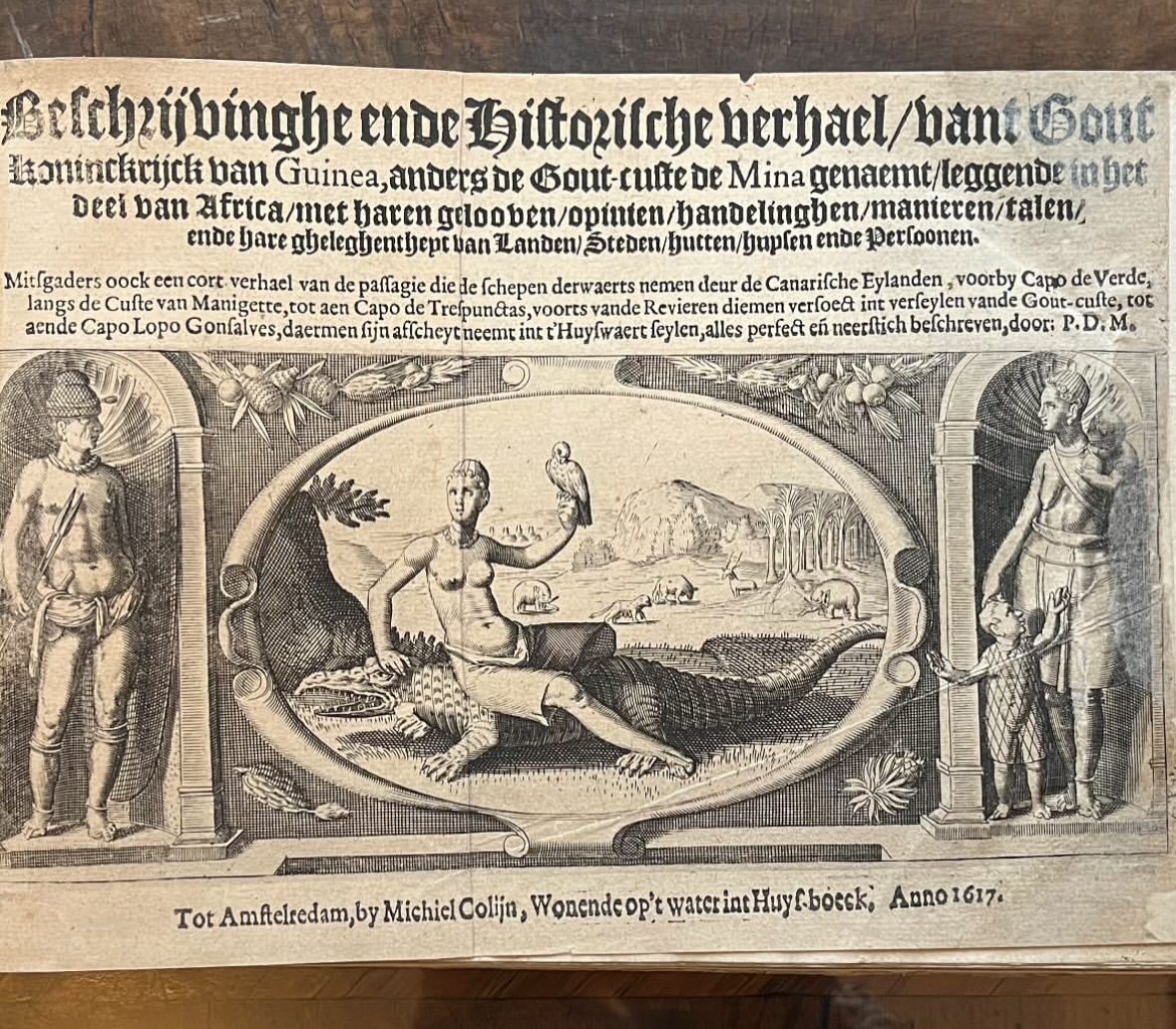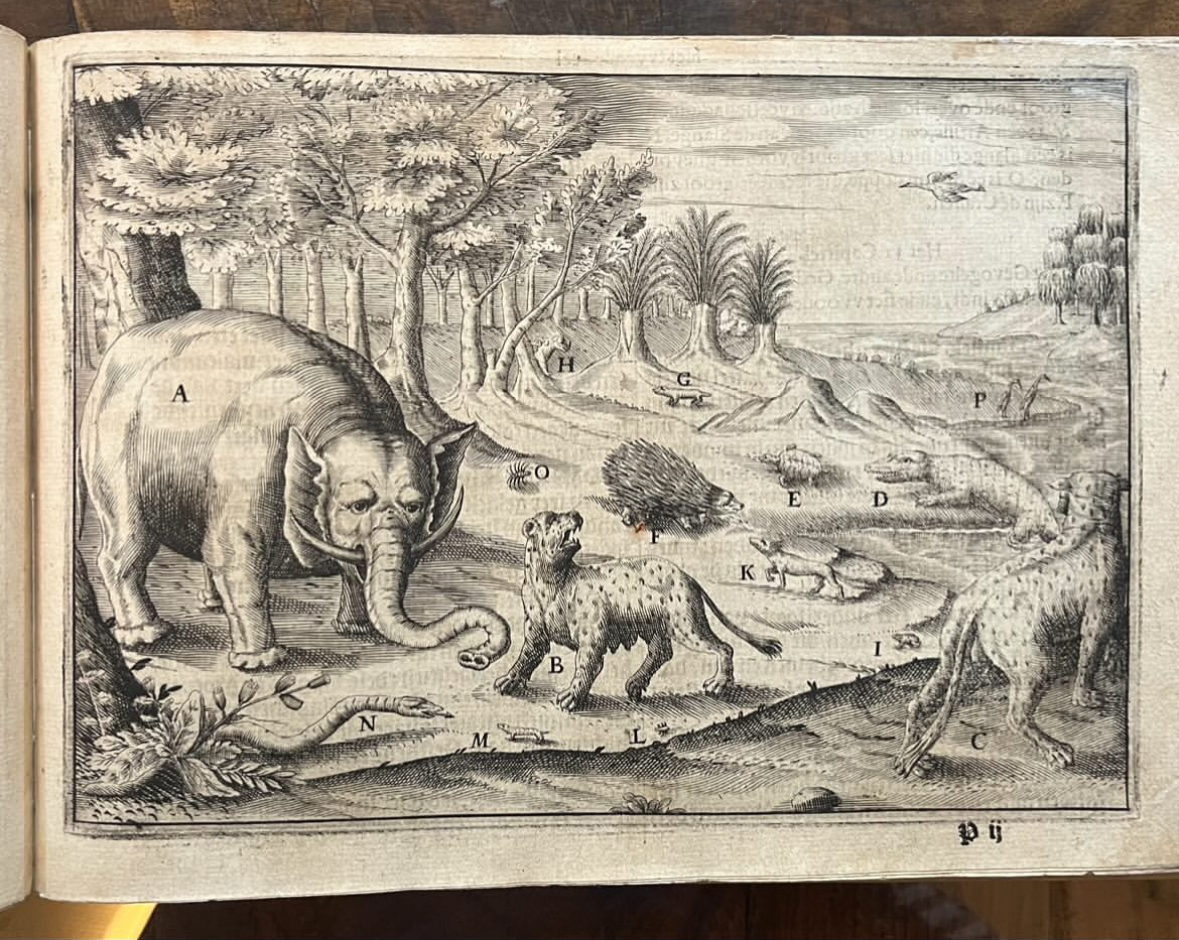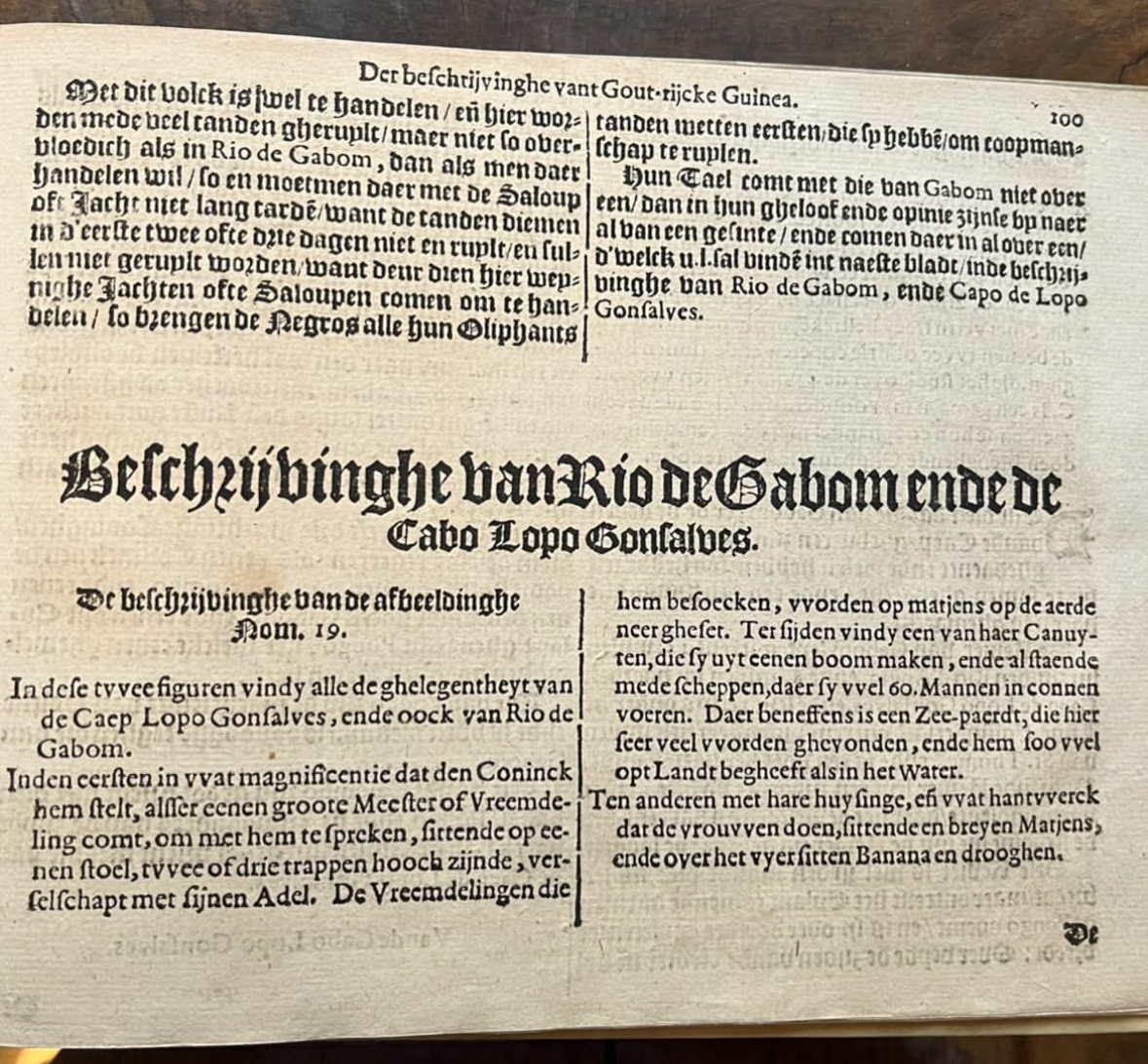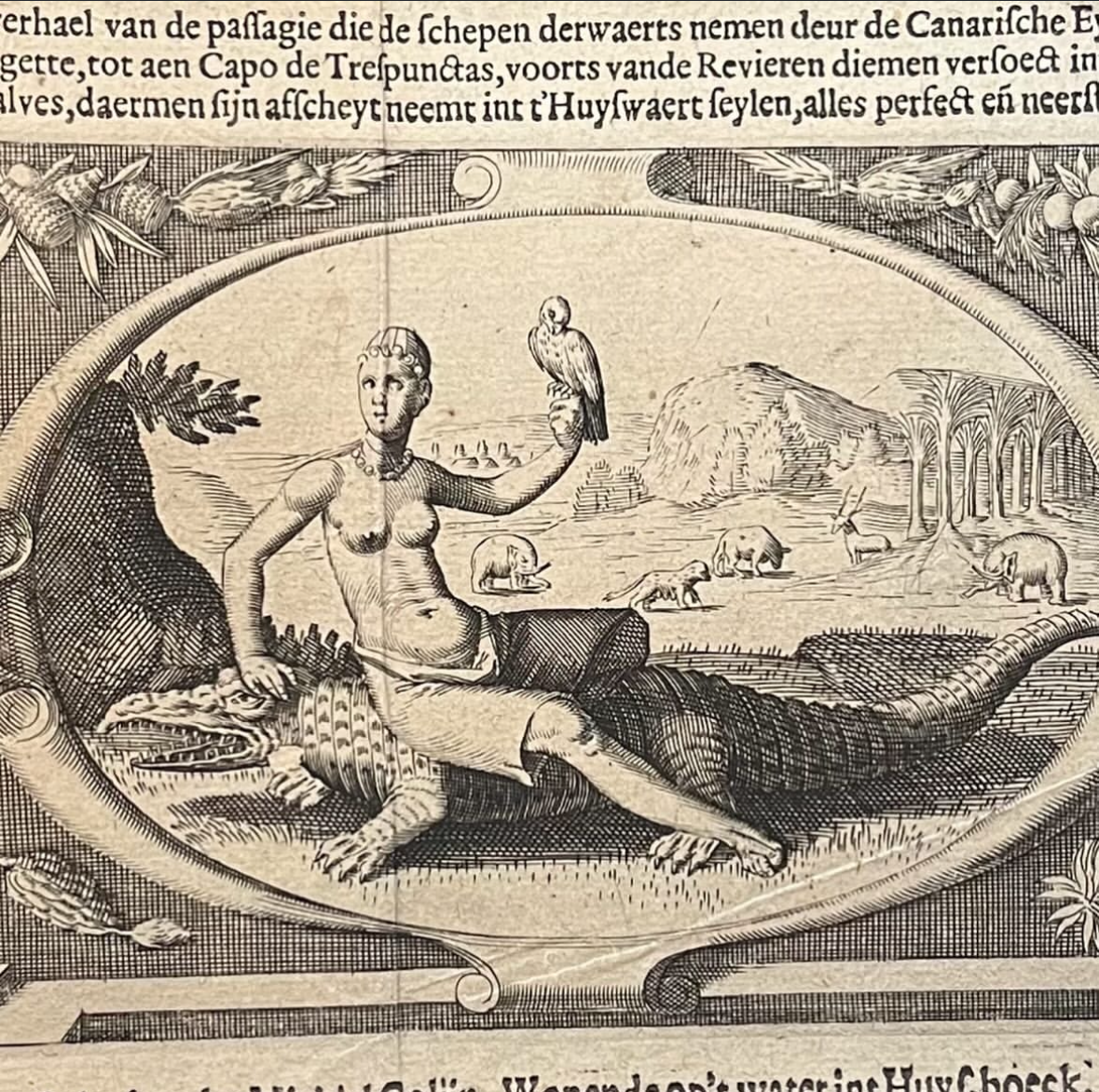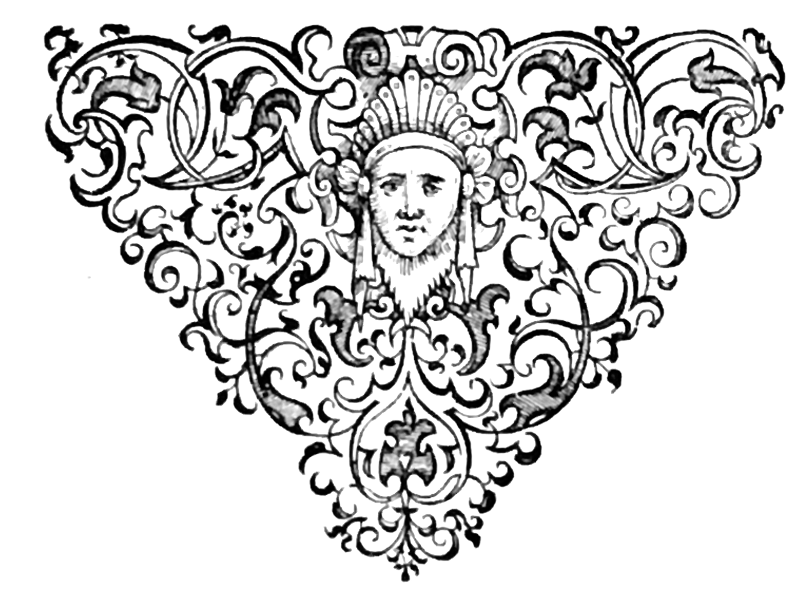De Bry Rare Books
Pieter de Marees's Beschrijvinghe ende Historische verhael vant Gout koninckrijck van Guinea - Rare 1617 Colijn Dutch Edition - Oblong Octavo
Pieter de Marees's Beschrijvinghe ende Historische verhael vant Gout koninckrijck van Guinea - Rare 1617 Colijn Dutch Edition - Oblong Octavo
Couldn't load pickup availability
"Beschrijvinghe ende Historische verhael vant Gout koninckrijck van Guinea, anders de Gout-custe de Mina genaemt leggende in het deel van Africa..."
-Pieter de Marees
-Amsterdam: Michiel Colijn, 1617
-Oblong 8vo (landscape format)
-Title-page with large engraved allegory of Africa (woman with cornucopia and crocodile for the Nile),
-Later vellum binding.
-99 (of 104) with 5 pages supplied in facsimile (1E1, 1G1, 1K4, 1L1 and 2C1)
-19 (of 20) illustrations with one supplied in facsimile
Second edition of Pieter de Marees’s famous Description and Historical Account of the Gold Kingdom of Guinea. Pieter de Marees’s Beschrijvinghe ende Historische verhael van het Gout Koninckrijck van Guinea (1602) is the most important European work on West Africa of the seventeenth century. A Dutch merchant sailing from Enkhuizen, little else is known about De Marees apart from this account of his voyage to the Gold Coast around 1597. Written for merchants and policy makers in the newly independent Dutch Republic, it was soon translated into Latin, French, and German, influencing and shaping European views of Africa. Images copied from his illustrations would be used by the cartographer Blaeu, and other illustrators, long into the 17th Century. The work describes the Akan people of modern-day Ghana and the Gold Coast, offering a remarkably detailed view of society. It includes descriptions of political and social structures, trade, religion, and even local hairstyles, memorably illustrated in a famous plate. De Marees’s description of the Akan remains a key primary source for historians and anthropologists today. Being a merchant, he focused on the region’s valuable commodities—gold, ivory, and pepper—and included a phrasebook to aid future traders. His observations on war captives being held as slaves within African societies predate, and in some ways anticipate, the transatlantic slave trade that would expand later in the seventeenth and eighteenth centuries.
The title-page allegory of Africa would have been immediately recognisable to contemporary readers: a crocodile for the Nile, symbol of danger and mystery, and a woman representing the fertility and abundance of the continent.
The oblong octavo format was typical of Dutch vernacular travel literature intended for a wide readership, but as such copies were heavily read and worn.
Complete copies are uncommon on the market.
